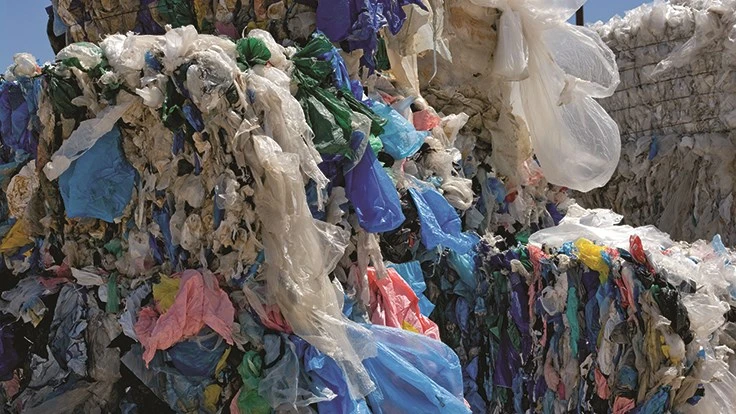
Recycling of nonbottle rigid plastics and plastic wraps, bags and flexible film packaging (collectively known as film) grew by 10 percent in 2016, according to two reports from the American Chemistry Council (ACC), Washington. More than 1.46 billion pounds of rigid plastics were collected for recycling, while 1.3 billion pounds of film were collected for recycling.
The “2016 National Post-Consumer Non-Bottle Rigid Plastic Recycling Report” and the “2016 National Post-Consumer Plastic Bag and Film Recycling Report” were released at the annual Plastics Recycling Conference, which took place in Nashville, Tennessee, Feb. 19-21.
The reports also show dramatic long-term growth in both plastics recycling categories, the ACC says. The volume of rigid plastics collected for recycling in 2016 is nearly 4.5 times greater than the volume collected in the 2007 inaugural report. Additionally, plastic film recycling has grown for 12 consecutive years and has more than doubled since 2005, when the first report was compiled.
“We are pleased to see the increase in plastic film and rigid plastics recycling in 2016 and the dramatic growth over the last decade,” says Steve Russell, vice president of ACC’s Plastics Division. “America’s plastic makers are committed to supporting plastics recycling growth through improved infrastructure and education and believe that these efforts will continue to support the industry in future years.”
Both reports attribute the increase in material collected for recycling partly to demand from export markets. As a result of China’s 2017 policy restricting imports of scrap materials, including plastics, the plastics recycling value chain is working to develop stronger domestic end markets to continue the increase in plastics recovered for recycling, the ACC says.
“From investments in recycling facilities and advanced technologies to public commitments to use more recycled plastics in products and packaging, we see real dedication from the recyclers and end users to grow end-market opportunities for plastics recycling here in the U.S.,” Russell says.
Recycled plastic film is used in composite lumber, new film and sheet, agricultural products, crates, buckets and pallets, the ACC says, while typical end markets for nonbottle rigids include automotive parts, crates, buckets, pipe, lawn and garden products, and thick-walled injection molded products.
Plastic film includes flexible product wraps, bags and commercial stretch film made primarily from polyethylene.
The rigid plastics category includes food containers; caps; lids; tubs; clamshells; cups and bulky items, such as buckets, carts and lawn furniture; and used commercial scrap, such as crates, battery casings and drums. As in prior years, high-density polyethylene (HDPE) and polypropylene (PP) comprised the two largest resins in this category, representing 40 percent and 36 percent, respectively, of total rigid plastics collected.
Both the film and rigids reports were based on an annual survey of reclaimers conducted by More Recycling, based in Sonoma, California.
Latest from Recycling Today
- BMW Group, Encory launch 'direct recycling’ of batteries
- Loom Carbon, RTI International partner to scale textile recycling technology
- Goodwill Industries of West Michigan, American Glass Mosaics partner to divert glass from landfill
- CARI forms federal advocacy partnership
- Monthly packaging papers shipments down in November
- STEEL Act aims to enhance trade enforcement to prevent dumping of steel in the US
- San Francisco schools introduce compostable lunch trays
- Aduro graduates from Shell GameChanger program





